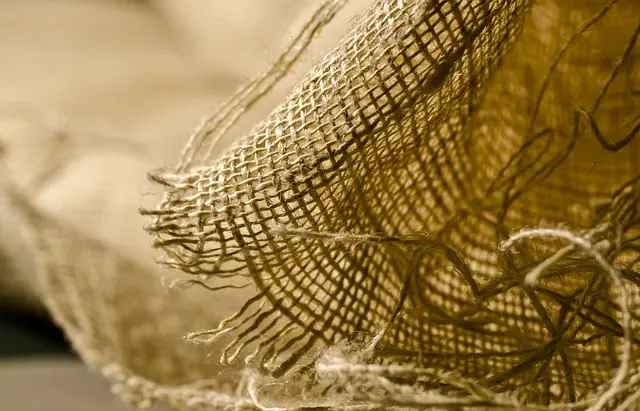Muscle soreness, commonly known as DOMS (Delayed Onset Muscle Soreness), is a common issue for those engaging in new or strenuous exercise routines. It's characterized by muscle pain and tenderness following activities that cause micro-tears in muscle fibers. Managing this soreness through a balanced workout plan that includes varied exercises, stretching, foam rolling, and proper rest is crucial for maintaining mobility and flexibility without worsening the condition. Low-impact exercises like swimming, cycling, or yoga are recommended for continued physical activity during recovery. Nutrition plays a significant role in muscle repair and growth, so a diet rich in protein, antioxidants, anti-inflammatory nutrients, vitamin D, magnesium, omega-3 fatty acids, and staying hydrated is essential. For individuals concerned about hair loss potentially linked to kratom use, it's advisable to consult healthcare professionals for personalized advice that considers all aspects of wellness, including diet and hair health. A holistic approach can help manage DOMS, promote an active lifestyle, and potentially address concerns such as hair regrowth after issues like kratom-induced hair loss. This approach emphasizes the importance of a nutrient-diverse diet for overall muscle recovery and hair health, highlighting that proper nutrition and medical guidance can significantly improve outcomes, including the potential for hair that has been lost to regrow.
When tackling muscle soreness, a personalized workout plan becomes your ally in maintaining fitness progress without exacerbating discomfort. Our exploration delves into how understanding the origins of muscle soreness can inform an effective workout routine that not only eases pain but also supports recovery and promotes continued strength gains. We’ll examine tailored strategies and exercises, including those who may be concerned about hair loss from kratom use and are seeking solutions to ensure their regimen aids in relief rather than contributing to their condition. Additionally, we’ll address nutritional factors that play a pivotal role in muscle health and overall well-being, providing a holistic approach to mitigating soreness. Join us as we navigate the path from pain to progress.
- Understanding Muscle Soreness and Its Impact on Workout Routines
- Tailoring Workouts to Alleviate Muscle Soreness: Strategies and Exercises
- Nutritional Considerations for Sore Muscles and Overall Well-being
Understanding Muscle Soreness and Its Impact on Workout Routines

Muscle soreness, often referred to as delayed onset muscle soreness (DOMS), can be a common occurrence for individuals engaging in new or intense exercise routines. It is characterized by pain and tenderness in the muscles that can arise within hours or days after training. This phenomenon is attributed to micro-tears in the muscle fibers, which are a natural response to the stress of unfamiliar or particularly strenuous activities. Understanding muscle soreness is crucial for tailoring workout plans to alleviate its effects without compromising progress or safety. Engaging in activities that challenge the body promotes muscle growth and strength, but when accompanied by significant soreness, it can impede performance and recovery. Therefore, incorporating exercises that target different muscle groups can help distribute the training load, reducing the intensity of soreness and allowing for continuous physical activity.
Customized workout plans for individuals experiencing muscle soreness should focus on maintaining mobility and flexibility while minimizing the aggravation of affected areas. Low-impact exercises such as swimming, cycling, or yoga can provide a beneficial workout without exacerbating soreness. Additionally, these activities promote circulation and aid in the recovery process. It’s also important to incorporate stretching and foam rolling into the routine to enhance muscle recovery and reduce stiffness. Proper rest and nutrition are equally significant components of a balanced workout plan, ensuring that the body has the resources needed for repair and growth. For those concerned about hair loss, such as that potentially linked to kratom use, understanding how individual health factors into overall fitness is essential. A personalized approach that considers all aspects of well-being, including potential side effects from substances like kratom, can help individuals manage muscle soreness effectively and maintain an active lifestyle.
Tailoring Workouts to Alleviate Muscle Soreness: Strategies and Exercises

crafting a workout regimen that addresses muscle soreness is crucial for maintaining an active lifestyle without undue discomfort. When incorporating exercises to alleviate muscle soreness, it’s important to select movements that target different muscle groups, allowing for recovery while still providing a comprehensive fitness routine. Engaging in activities that involve dynamic stretching and light resistance training can enhance blood flow and promote muscle healing. For instance, exercises like arm circles or leg swings can prepare your muscles for more intensive workouts without exacerbating soreness. Additionally, strength training with a focus on compound movements such as squats, deadlifts, and presses, when performed with proper form and controlled motion, can stimulate muscle growth and recovery. It’s also beneficial to include exercises that isolate specific muscles, which can be performed at a lower intensity to prevent additional strain. Including low-impact cardiovascular exercises like swimming or cycling can further support muscle health by increasing circulation without placing undue stress on joints or recently fatigued muscle groups.
In tailoring workouts to alleviate muscle soreness, it’s essential to listen to your body and adjust the intensity and volume of your exercise routine accordingly. For those experiencing significant discomfort, incorporating yoga or Pilates can be highly beneficial. These practices enhance flexibility, reduce tension, and improve overall muscle balance. Furthermore, integrating foam rolling and myofascial release techniques into your cooldown can aid in muscle recovery by breaking down knots and adhesions within the soft tissue, which may contribute to soreness. By combining these strategies with a balanced diet rich in protein, antioxidants, and anti-inflammatory nutrients, you can create an effective workout plan that not only mitigates muscle soreness but also promotes overall wellness and fitness. Remember to stay hydrated and consider consulting with a fitness professional or physical therapist to design a personalized routine that suits your specific needs and circumstances.
Nutritional Considerations for Sore Muscles and Overall Well-being

When dealing with muscle soreness, particularly after an intense workout, nutrition plays a pivotal role in both alleviating discomfort and promoting overall well-being. A balanced diet rich in antioxidants, anti-inflammatory agents, and essential nutrients is crucial for muscle repair and recovery. Foods high in vitamin D, magnesium, and omega-3 fatty acids can help reduce inflammation and support the immune system. For instance, fruits and vegetables like berries, leafy greens, and tomatoes offer a wealth of antioxidants that combat oxidative stress and aid in muscle healing. Additionally, staying hydrated is essential to ensure that cells, including muscle cells, function optimally and recover from the stress of exercise.
Hydration also supports the kidneys and liver in flushing out toxins, which can contribute to muscle fatigue and soreness. Protein intake is another key factor; it provides the building blocks for muscle tissue repair and should be consumed in adequate amounts, particularly after workouts when muscle protein synthesis rates are heightened. While considering these nutritional elements, individuals with specific dietary restrictions or concerns, such as those who have experienced hair loss they attribute to kratom use, should consult healthcare professionals for tailored advice. The relationship between nutrition and hair health is complex, and while the focus here is on muscle soreness relief, addressing overall well-being includes considering all aspects of health, including hair health if it’s a concern. Ensuring a diverse diet that includes lean proteins, healthy fats, and a variety of fruits and vegetables can not only assist in muscle recovery but also contribute to the health and potential regrowth of hair, as proper nutrition is foundational to bodily functions and healing processes.
Muscle soreness can be a significant hurdle for those aiming to maintain an active lifestyle or recover from intense workouts. This article has delved into the mechanisms behind muscle soreness and its implications on workout routines, offering tailored strategies and exercises designed to alleviate discomfort. Additionally, we’ve explored how nutritional choices can support muscle recovery and overall well-being, which is crucial for anyone experiencing post-exercise aches. For individuals concerned about hair health, such as those facing hair loss from kratom use, understanding the interplay between exercise, nutrition, and hair growth is particularly important. By incorporating the right mix of activities and dietary considerations, one can effectively manage muscle soreness and potentially enhance hair health. It’s clear that a personalized approach to fitness and recovery not only aids in overcoming muscle soreness but also contributes to the health of your hair, ensuring you stay strong and confident both physically and aesthetically.






